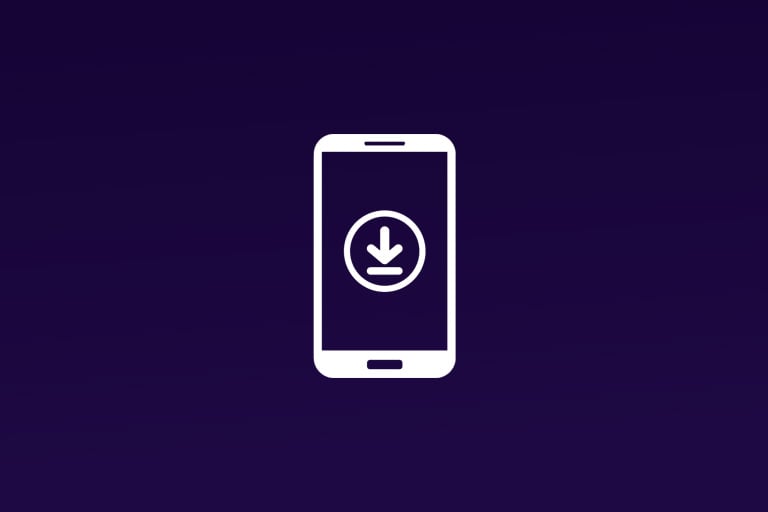Maintaining user engagement and retention is crucial in app marketing. App stickiness, a key metric for understanding user retention, measures how often users return to an app and how long they stay engaged. In this article, we'll explore strategies to improve app stickiness, methods to measure it, and how to use benchmarks to gauge success.
What Makes an App Sticky?
App stickiness refers to the tendency of users to return to an app regularly. It’s often quantified using the ratio of Daily Active Users (DAU) to Monthly Active Users (MAU). For example, if a fitness app has 10,000 DAU and 50,000 MAU, its stickiness ratio is 20%. This means that 20% of users who interact with the app each month are doing so daily, reflecting a high level of engagement.
A high stickiness ratio suggests that a significant portion of monthly users are engaging with the app daily, indicating strong user engagement. Several factors contribute to this:
- User Experience (UX): A seamless, intuitive interface that is easy to navigate can significantly enhance user satisfaction. A well-designed UX minimizes frustration and encourages users to return.
- Personalization: Tailoring content and features to individual preferences can increase engagement. Personalization makes users feel valued and understood, which can boost loyalty.
- Value Proposition: Offering unique features or services that are valuable to users can make an app indispensable. This might include exclusive content, special functionalities, or efficient solutions to users' problems.
- Push Notifications: Effective use of push notifications can keep users engaged by reminding them of important updates or encouraging them to return to the app.
- Gamification: Integrating game-like elements such as rewards, leaderboards, or challenges can make an app more engaging and fun, increasing the likelihood of repeat usage.
- Social Features: Allowing users to connect with others through social features, such as sharing, messaging, or collaborative tasks, can enhance user engagement.
What Is a Good Stickiness Ratio for Apps?
The stickiness ratio is a metric that helps evaluate how well an app retains users. It's calculated by dividing the number of Daily Active Users (DAU) by the number of Monthly Active Users (MAU). A higher ratio indicates a larger portion of monthly users are actively using the app daily.
Generally, a good stickiness ratio for apps is 20% or higher, but this can vary depending on the app type and industry. For instance, social media apps tend to have higher stickiness ratios due to the nature of constant interaction and content consumption. Meanwhile, utility apps may have lower ratios but still achieve success if they provide critical functionality.
What Is the App Sticky Factor?
The app sticky factor refers to the elements or characteristics that contribute to an app’s ability to retain users. These factors are closely related to the app’s stickiness and include:
- Engagement Features: Interactive elements that keep users engaged. Features such as quizzes, games, or personalized recommendations keep users actively involved with the app. Interactive elements encourage users to spend more time in the app and can drive repeat usage.
- Regular Updates: Frequent updates with new content or improvements can keep the app fresh and relevant. Adding fresh content, introducing new features, and fixing bugs all contribute to a better user experience and help retain users by ensuring the app remains smooth and up-to-date.
- Community Building: Creating a sense of community or belonging can enhance user loyalty. Community building is enhanced by integrating social features like profiles, comments, and sharing options to foster interaction and create a sense of belonging. Allowing user-generated content, such as reviews and photos, further increases engagement and investment in the app. Providing excellent customer support and actively interacting with users also builds trust and strengthens the app-user relationship.
How to Measure App Stickiness
To measure app stickiness, you can use several key metrics and analytical tools:
- DAU/MAU Ratio: The Daily Active Users (DAU) to Monthly Active Users (MAU) ratio measures how often users engage with your app. A higher ratio indicates that users are frequently returning to the app. A DAU/MAU ratio of 0.2 (or 20%) is often considered good, but this can vary by app type and industry. For highly engaging apps, this ratio can be higher, often approaching 0.5 (50%).
- Retention Rates: Track how many users return to the app after their first visit. Common intervals to measure include day 1, day 7, and day 30 retention rates.
-
- Day 1 Retention: 40-60% is generally considered good.
- Day 7 Retention: 20-30% is a common benchmark for many apps.
- Day 30 Retention: 10-20% is a reasonable target for most apps, though high-performing apps may exceed this.
- Session Length and Frequency: Analyze how long users spend on the app and how frequently they use it. Longer sessions and higher frequency indicate better stickiness. This varies widely by app type, but a typical benchmark might be 5-10 minutes per session and multiple sessions per week for high-engagement apps.
- Churn Rate: The churn rate measures the percentage of users who stop using the app over a specific period. A lower churn rate is desirable, indicating that users find the app valuable enough to keep using it. App developers should aim for a churn rate below 5% per month, though this can vary depending on the app type and market.
- Cohort Analysis: Cohort analysis involves grouping users based on shared characteristics or behaviors and tracking their interactions with the app over time. This helps in understanding how different user segments engage with the app. There is no specific indicator but consistent engagement within cohorts over time is a positive indicator of stickiness.
- In-App Surveys and Feedback: Collecting direct feedback from users provides qualitative insights into their satisfaction, reasons for continued use, or reasons for abandoning the app. Similar to cohort analysis, while there's no numerical benchmark, a high level of positive feedback and suggestions for improvement indicates that users find the app engaging and valuable.
How Do You Increase Stickiness?
Increasing app stickiness involves implementing strategies to enhance user engagement and retention.
Enhance Onboarding
A crucial first step is to enhance onboarding by creating a smooth, engaging process that helps users quickly understand the app’s value. This includes simplifying the onboarding steps, highlighting key features, and personalizing the experience based on user demographics or preferences.
For instance, Duolingo, a popular language-learning app, excels in onboarding by offering a clear, engaging introduction to its features. The app uses interactive lessons and immediate feedback to help users start learning quickly, reducing the likelihood of churn.
Implement Personalization
Personalization plays a significant role in increasing stickiness. By analyzing user behavior and preferences, you can offer tailored content and recommendations that make the app more relevant to each user. For example, Netflix is renowned for its personalized recommendations. By analyzing viewing history and preferences, Netflix suggests content tailored to individual tastes, keeping users engaged and returning to the app regularly. Personalization might involve dynamic content adjustments and personalized notifications to better engage users.
Engage Users with Content
Engaging users with fresh content is essential to maintaining their interest. Regular updates, whether through new features, articles, or media, keep the app appealing. Ensuring the content is of high quality and aligned with user interests is equally important for sustaining engagement.
Utilize Push Notifications Wisely
Effective use of push notifications can drive user interaction. Sending timely and relevant alerts helps remind users of important updates or actions they need to complete. However, it's crucial to avoid overloading users with too many notifications, which could lead to disengagement. App developers may also use in-app messages to offer support, share updates, and engage users without disrupting their experience.
Introduce Gamification Elements
Incorporating game mechanics can transform routine tasks into engaging experiences. Consider integrating reward systems, challenges, or leaderboards to boost user motivation and satisfaction. For example, a fitness app might introduce a daily activity streak challenge with point rewards. Leaderboards can add a social element, allowing users to compete with friends or a broader community, further enhancing stickiness.
Build a Community
A sense of community fosters user loyalty and encourages continued engagement. Integrate social features that allow users to connect and interact with each other. For example, a running app could offer a social feed where users share running routes, goals, and achievements. This fosters a sense of connection and motivates users to stay active, keeping them invested in both the app's functionality and the social aspect.
Offer Incentives
Rewarding users for consistent engagement goes a long way. Offer incentives like discounts, exclusive content, or loyalty programs to encourage regular app usage. An e-commerce app could implement a loyalty program where users earn points for purchases, redeemable for discounts or exclusive products. This incentivizes users to return and shop more frequently.
Solicit and Act on Feedback
Actively solicit user feedback and utilize it to refine your app. Demonstrate a commitment to user satisfaction by addressing concerns and implementing requested features. In-app surveys can be a valuable tool for gathering feedback on features, user experience, and desired functionalities. By incorporating user insights, you can continuously improve the app and cultivate user loyalty.
Analyze User Behavior
Analyze user behavior data to gain valuable insights into user interactions with your app. Identify areas for improvement and leverage this data to optimize features and content. For instance, a travel booking app could analyze user search patterns and booking behavior. This data can be used to personalize search results, recommend relevant destinations, and optimize the booking process for a more seamless user experience.
Conclusion
Improving app stickiness requires a strategic approach to optimizing user experience, personalizing interactions, and maintaining engagement through innovative features and updates. By measuring stickiness with metrics like DAU/MAU ratios, retention rates, and session metrics, and benchmarking against industry standards, you can effectively evaluate and enhance your app’s performance. Focus on creating value and fostering engagement to ensure sustained user retention and app success.
Get Professional App Marketing Service With FoxData
Ready to make your app shine? Optimize your app's visibility and rankings with FoxData by leveraging our powerful insights today! Enhance your digital presence with FoxAdvert, our expert digital marketing agency! Partner with our expert team for targeted advertising strategies that drive results. Let's get started!







